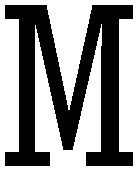Onbedoeld of niet, in muziek is een link altijd gauw gevonden. In zijn ‘Fremde Szenen’ onderneemt Wolfgang Rihm een bewuste poging om de verbijstering van Schumanns eerste publiek te restaureren. Door bepaalde archetypisch Schumanneske motieven naar een twintigste-eeuwse toontaal te transponeren, ontstaat een herkenbare boog tussen oud en nieuw. Ook Schönbergs ‘Verklärte Nacht’ knoopt aan bij de componist uit Saksen. Net als diens eerste trio start het werk somber in re klein, en eindigt het gelukzalig in re groot. Of zoals het onderliggende gedicht van Richard Dehmel het heeft: boven het dorre, koude woud klaart de verheven, helle nacht.
Unintentional or not, music is full of intertextual links. In his ‘Fremde Szenen’, Wolfgang Rihm makes a conscious attempt to restore the bewilderment of Schumann’s first audiences. By transposing certain archetypically Schumannesque motifs into a twentieth-century tonal language, he reveals formerly unheard resonances between the old and new. Schoenberg’s ‘Verklärte Nacht’ also ties in with the composer from Saxony. As in his first trio, the work starts sombre in d minor and ends blissful in D major. Or as the underlying poem by Richard Dehmel puts it: above the cold and barren grove shimmers the lofty, luminous night.
R. Schumann (1810-1854)
–
Pianotrio in d
W. Rihm (1952)
–
Fremde Szene III
A. Schönberg (1874 – 1951)
–
Verklärte Nacht (arr. E. Steuermann)

